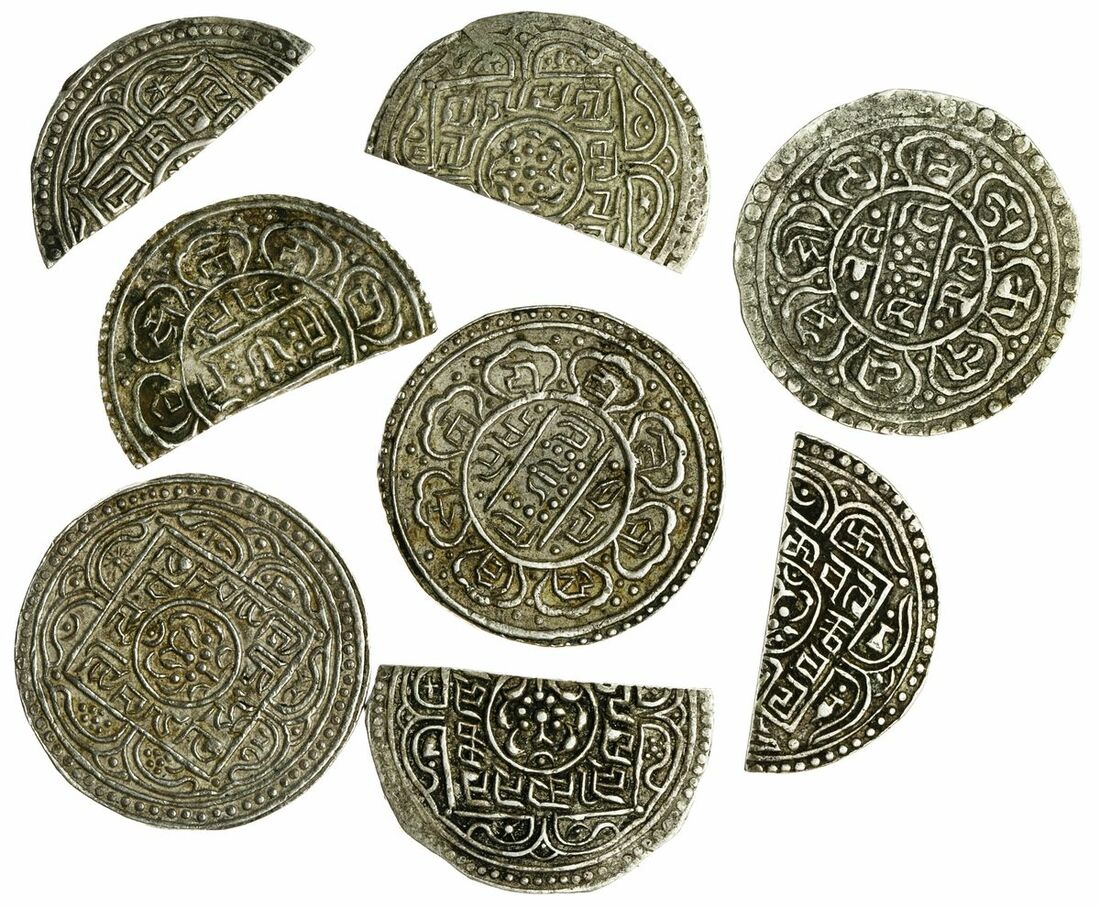
Auction: 23127 - Spink Numismatic e-Circular 32: Indian and Islamic Coins Featuring the Klaus Bronny Collection of Bhutanese and Nepalese Coins - e-Auction
Lot: 9702
(x) Nepalese Merchants for Tibet (c. 1880-1912), after Pratap Simha Shah (1775-1777), Ranjana Tangka, BE 15-28 (1894), lotus, rev. eight petals around, 5.10g (KM C27), a pleasing strike, good very fine, scarce; Ranjana Tangka, BE 15-40 (1906), as before, 5.25g (KM C27.1), good very fine, scarce; Ranjana Tangka, BE 13-1[6?] (meaningless date), as before, 4.77g (cf. KM C27.1), rubbed, nearing very fine; Fractional Ranjana Tangka (1 Sho) (3), one dated BE 15-40 (1906), with five petals, cut straight, 2.00g; 3.18g; another, with five petals, cut straight, edge trimmed, 3.34g (cf. KM C27; 27.1); Fractional Ranjana Tangka (7.5 Skar), with four petals, cut straight, 2.60g (cf. KM 27; 27.1); Fractional Ranjana Tangka (5 Skar), with three petals, cut straight, 1.74g (cf. KM C27; 27.1), all very fine (8)
The Klaus Bronny Collection of Bhutanese and Nepalese Coins
The Ranjana Tangkas (named after the script used on both sides) are believed to have been struck unofficially by Nepalese merchants in Tibet roughly between the years 1880-1912 and circulated at the same rate as Kong-par and Ga-den Tangkas of Tibet. The design of the Ranjana Tangka was copied from the mohars struck in Kathmandu in the name of Pratap Simha (1775-1777). These were also exported to Tibet and cut, according to the number of petals of the reverse, to create fractional denominations.
Cf. "The Tibetan Tangkas with Rañjana Script", Bertsch, Wolfgang, ONS, no. 185, autumn 2005, p.18-31.
Subject to 5% tax on Hammer Price in addition to 20% VAT on Buyer’s Premium.
Sold for
£1,200
Starting price
£270




